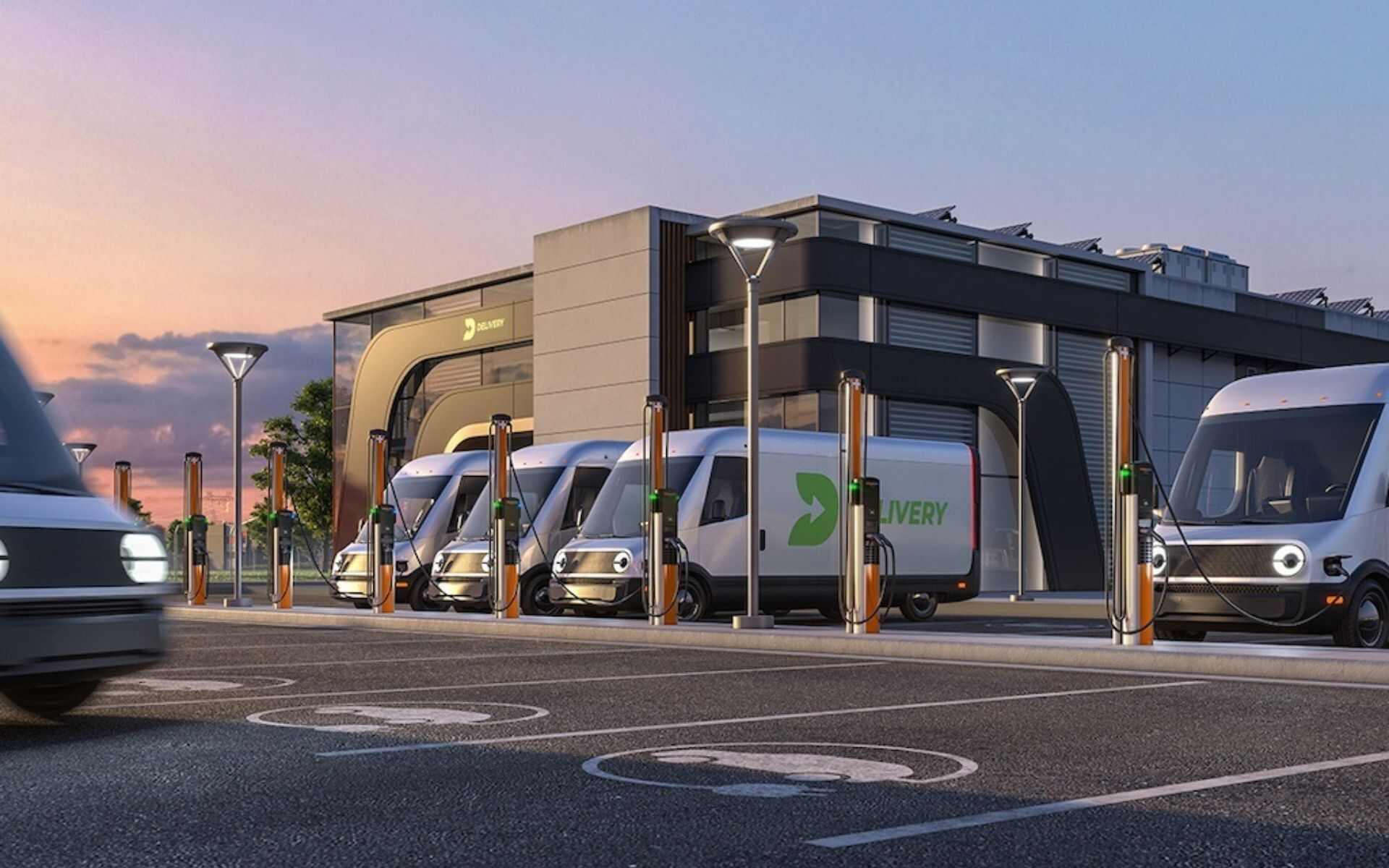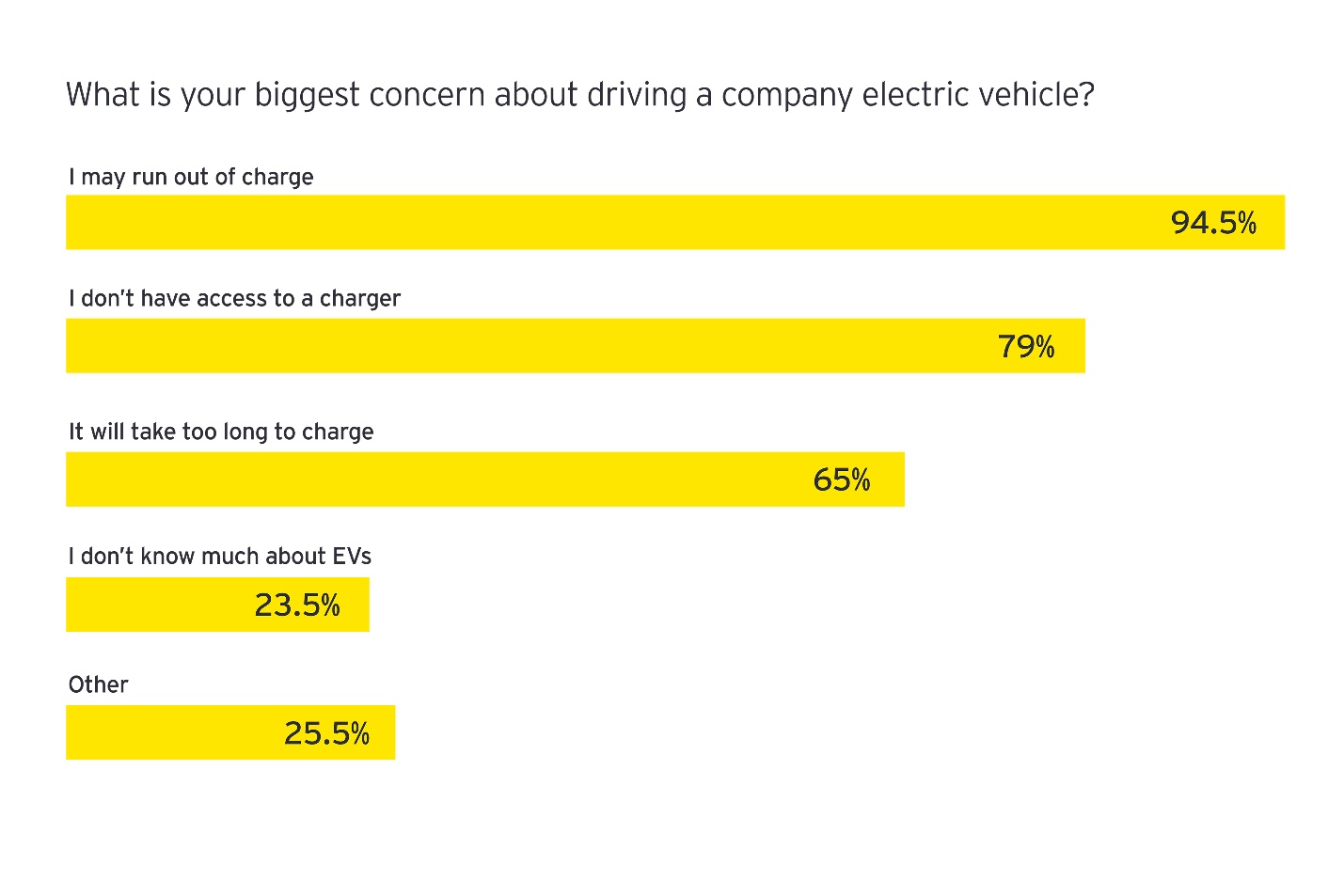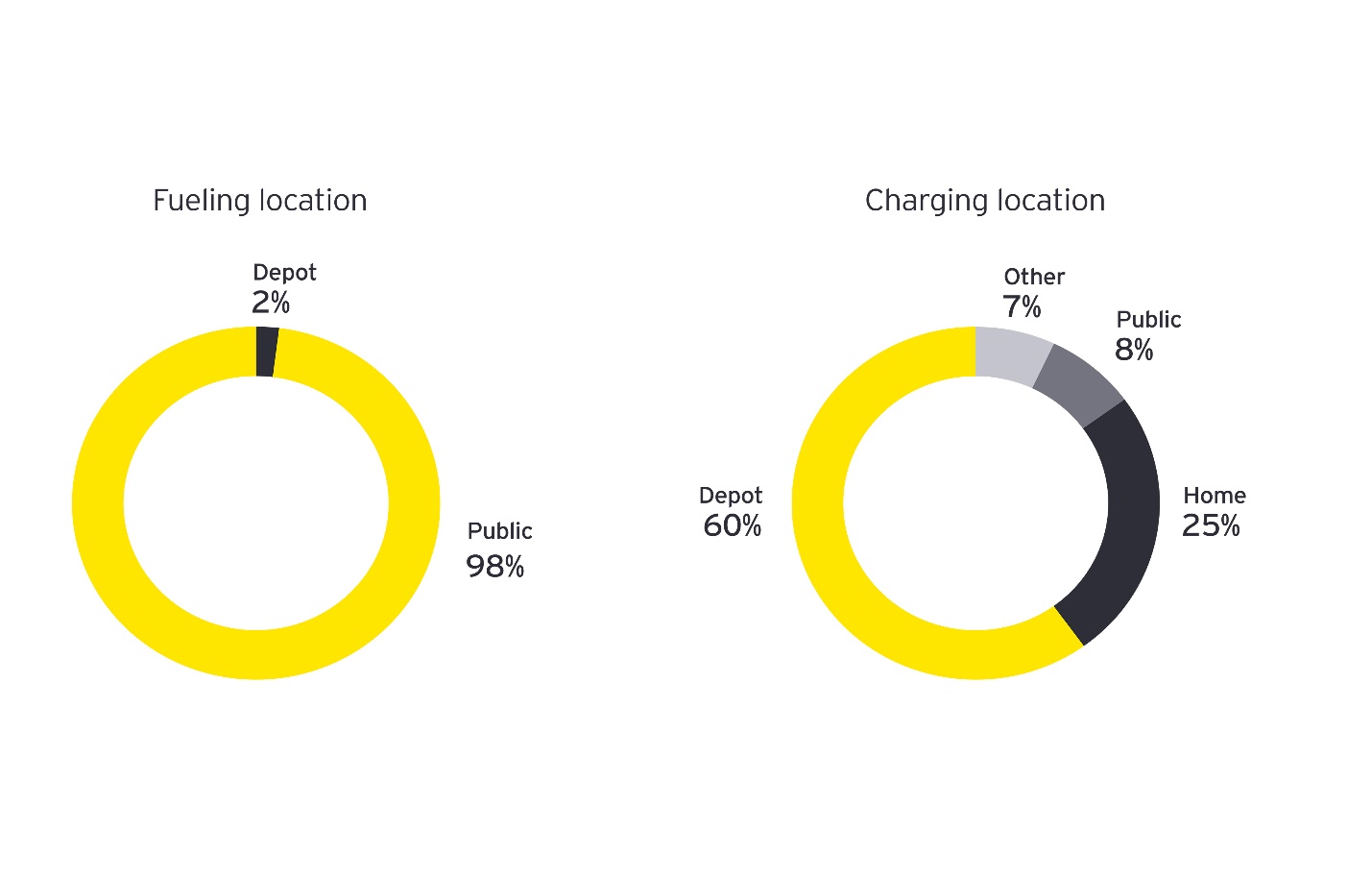September 15, 2023
5 Common Objections to Commercial Fleet Electrification

7 Min. Read
This article was originally published February 22, 2022 and was updated September 15, 2023.
Commercial fleets are transitioning to zero-emission electric vehicles (EVs), and the global value of EV fleet vehicles is expected to grow from $105 billion in 2023 to $325 billion in 2028, with a cumulative growth rate of 25.1%.
There are several reasons for this,
- Increased corporate support for sustainability.
- Parallel state, federal and utility incentives for sustainability projects.
- Diminishing operating costs to maintain EVs vs. internal combustion (ICE) vehicles.
Even with these massive benefits, hesitancies to transitioning to EVs persist for many fleet managers and drivers. In this article we’ll explore the five most common objections commercial fleets have when it comes to electrifying their fleet, and why many fleets are making the determination that the benefits outweigh potential concerns.
Market Growth and the Electrification of Transportation
Electrification is the conversion from fossil fuels to sustainable energy sources. The goal behind electrification is a substantial reduction in global carbon emissions. EVs are a key facet of electrification, with internal combustion vehicles contributing 29% of carbon-based emissions in the United States. Simply put, EVs generate no exhaust and are a more sustainable, and resilient, form of transportation.
As a result, EV technology is sweeping across the auto industry. The commercial fleet sector can benefit from this advancement in the electrification of transportation through a reduction in emissions, lower operating costs, and a sustainable boost to your business. By 2030, the expectation is that 10-15% of passenger and commercial fleets will be EVs, so it’s imperative to begin looking ahead to the future of your business.
A specific example is a study by Enterprise, a prominent fleet management company that revealed that it could transition 45% of its fleet to EVs at a savings of $33 million over four years. Another large fleet owner, Hertz, ordered 175.000 EVs recently.
The Top Five Objections to Commercial Fleet Electrification
Converting to a zero-emission fleet can be expensive. There are obvious costs to incur when upgrading or replacing a commercial fleet. Costs to purchase new electric vehicles can be high, but a proper analysis, including both costs and benefits, will demonstrate the overall advantage of EV fleets. Read on for the list of common objections.
High Upfront Costs for Car Upgrades With Dubious ROI
Exploring several factors helps you understand all fleet electrification costs and benefits. These factors include a total cost of ownership (TCO) analysis which considers the complete financial picture when converting to an electric fleet.
Starting with the initial purchase price is just the start. You need to also factor in maintenance costs, downtime from maintenance repairs, government incentives, resale value, and fuel costs.
For example, Car and Driver Magazine conducted an analysis that compared head-to-head the total three-year cost of Hyundai and Ford’s vehicles offered in both ICE and EV forms. Their initial analysis suggests that the Ford EV had a lower total cost, while the Hyundai had a higher one.
But that is not the end of the analysis. Accounting for federal tax credits of $7500 drives both EVs’ TCO below that of their ICE counterparts. State and local incentives may drive the TOC even lower.
The table below summarizes the results.
| Make/Model | 3-Year Cost of Ownership before Federal Incentives | Federal Tax Credit | 3-Year Total Cost of Ownership After Federal Incentives | |
| Hyundai Kona (ICE) | $19,385 | N/A | $19,385 | |
| Hyundai Kona (EV) | $21,436 | $7500 | $13,936 | |
| Ford F-150 (ICE) | $26,505 | N/A | $26,505 | |
| Ford F-150 Lightning (EV) | $23,840 | $7500 | $16,340 | |
Be sure to look at the complete picture in your analysis. Since the picture at all levels is evolving, consulting a trusted expert on fleet electrification makes sense.
“EVs and Their Parts Don’t Have a Secondary Market, and I Can’t Factor in Their Resell Value.”
Because the EV market is relatively new, the secondary market is not as large as traditional internal combustion engine vehicles, but this is rapidly changing. Even so, the sample size for resale price data is not as deep as that of ICE vehicles.
The two major resources in this area are Edmunds and Kelly Blue Book. Edmunds allows you to search for actual examples of used EVs and their prices.
Kelly Blue Book is a similar resource for buyers, but Kelly also offers several used car valuation tools to dealers. You may be able to leverage your relationship with your dealer or manufacturer to get access to dealer valuation tools.
With more resale dates available in the future, the resale picture will clarify. Just remember, the key is the TCO, not just the resale value. Do not reject the idea based on one criterion.
“New Systems Are Hard To Implement.”
Industries can get set in their ways, and change can be difficult to implement. Again, here is another point where you need to do your analysis. You may not need to replace systems outright; just adapt them.
Once you calculate the benefit of lower TCO, you may find that savings far outstrip any systems changes. This is another area where an expert third-party help can be important.
“There Aren’t Enough Vehicle Choices”
Automakers are making huge commitments to go completely electric in the coming years. For example, Ford alone is investing $22 billion in EVs through 2025, GM has a goal of ceasing production of ICE vehicles by 2025, and Stellantis, formerly Chrysler-Jeep, will invest $36 billion by 2025.
This means more and more EV options will be available shortly. Moving to EVs sooner can prove to be beneficial for your company. If you are an early adopter, you will be ahead of the curve, work out issues ahead of the competition, and begin to see benefits sooner.
“There Are No Charging Stations in This State”
This is a genuine concern among fleet drivers. Ernst & Young, a top four audit and consulting firm, surveyed fleet drivers and confirmed that range anxiety is their biggest issue.
Charging infrastructure is challenging in certain areas, but a huge push exists to expand and install charging stations nationwide. The Biden Administration has a plan to install 500,000 charging stations across the country, which should help alleviate some of these concerns.
The Administration is strongly supporting these efforts. The Inflation Reduction Act of 2022 invested $3.7 billion in EV charging, $10 billion in clean transportation, and $7 billion in EV battery technology. It also extended the credits to 2032.
E&Y concluded that effective planning for charging is the key to successful commercial fleet electrification. It noted that Depot and Home are the preferred EV charging locations. Public stations are preferred for ICE vehicles. While depot charging is more popular for EVs, a significant percentage of drivers prefer home charging (25%).
Comparison between preferred fueling and preferred charging location
At-home charging stations can address these concerns. In some applications, small, independent commercial fleets will have the opportunity to be fully charged if they use at-home charging overnight. In the meantime, fleet managers can use resources like the U.S. Department of Energy site to plan charging stops.
Summary
Objections and questions are natural and normal in the due diligence process. With more research and experience, the outlook for fleet electrification will clarify. With proper planning and analysis, and with expert help, you can mitigate the risks of the transition.
At-home charging will be a growth area, based on drivers’ current perspectives and a relative early shortage of public charging stations. Alternatively, fleet owners may need to expand their charging capabilities.
Qmerit Can Help
With unparalleled expertise in the EV market and trends and over 269,000 EV charging stations installed by our network of certified electricians, Qmerit is a national leader in electrification services and installations. We are on the cutting edge of electrification trends and training, with a track record of success recognized by auto manufacturers, EV charging station manufacturers, businesses, homeowners, and even The White House.
Qmerit’s Charge@Home for Fleets offers turnkey solutions to help you create your at-home charging infrastructure, and we can also help navigate the planning and electrification for your centralized depot charging needs. Through Qmerit’s technology and resources, you can avoid unnecessary expenses and build a system that works for you.
Our wide network of certified installers nationwide provides top-notch services and uses commercial-grade equipment to give you peace of mind in knowing the charger is safely and efficiently designed to meet the needs of your fleet. We’ll also work with you to ensure you receive the maximum incentives you are entitled to for your projects. Qmerit integrates our proposals to include all applicable incentives, making this process seamless for you.
In today’s rapidly evolving EV world, Qmerit is your expert partner in making the transition to electric vehicles and building your fleet business for the future. Get ahead of the curve and get smart about fleet electrification. Contact Qmerit today!


